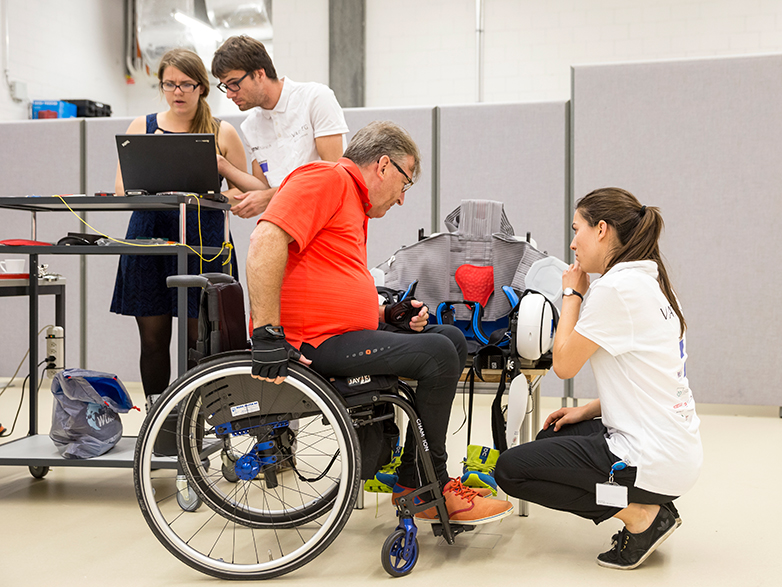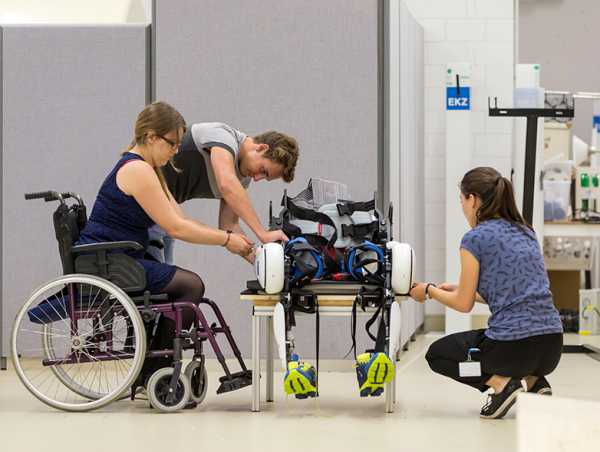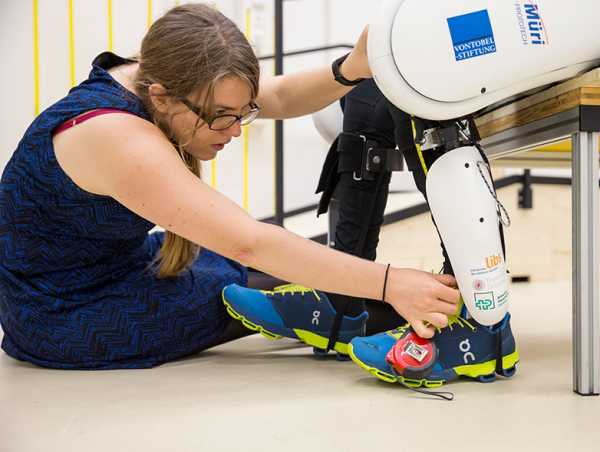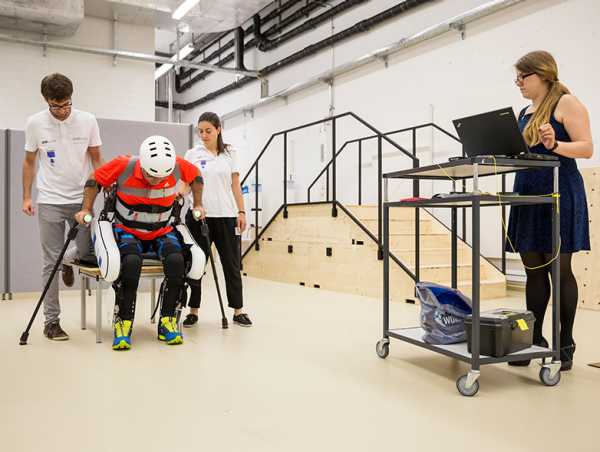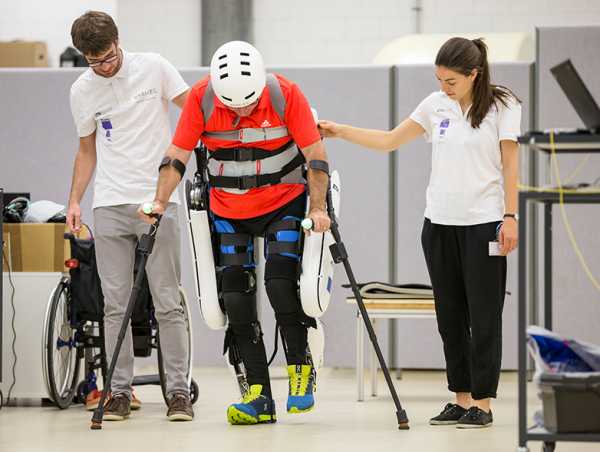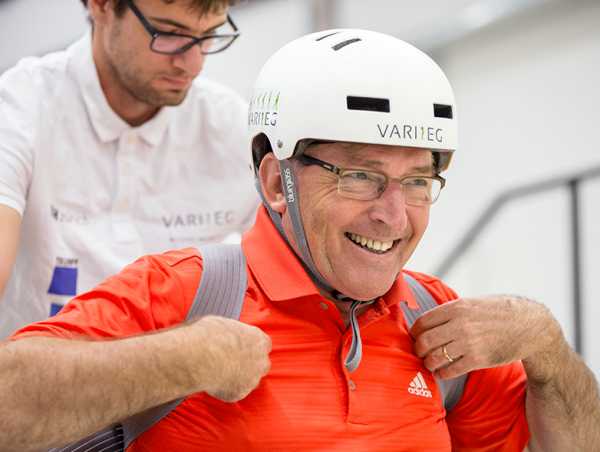Learn how to walk
At first glance, exoskeletons conjure up images of futuristic robots from science fiction films. But the exoskeleton from the ETH team VariLeg is a real-life aid that could allow people with paraplegia to walk again.
The exoskeleton VariLeg is the work of an interdisciplinary team of 11 ETH students and doctoral candidates. The first prototype was developed by nine Bachelor’s students from the Department of Mechanical and Process Engineering in the course of a focus project from autumn 2014 to spring 2015. The exoskeleton, which will now be put into action at the Cybathlon, is a further development of this prototype and grew out of a subsequent focus project. “Cybathlon was our target from the very beginning,” says Patrick Pfreundschuh, a Bachelor’s student in mechanical engineering. “We were convinced that we could significantly improve on our original prototype and make it ready for this one-of-a-kind competition.” Together with several participants from the original team, the new team went to work in autumn 2015.
With their prototype, the students hope to solve a major problem facing many exoskeletons: they do not have the flexibility required to walk on uneven surfaces, where the leg must be able to handle small obstacles. The software used in existing exoskeletons does not take sufficient account of this problem, so users fall down easily when the legs move forward to positions predetermined by the software. The VariLeg, by contrast, is more flexible thanks to a spring mechanism in the knee. For example, the leg can remain slightly bent instead of extending fully.
What the new VariLeg team initially underestimated was how people with lower-limb paralysis handle an exoskeleton in comparison to people without physical impairments. In the first focus project, the prototype was only tested on non-disabled people due to safety considerations. With the help of the Swiss Paraplegic Centre (SPZ), the second group brought Philip Wipfli and Werner Witschi onto their team as paraplegic “pilots” (wearers of the exoskeleton). The two provide the young developers with advice and support, and also contribute their professional experience: Wipfli was a physiotherapist and Witschi is an electrical engineer. “Their feedback particularly helped us with the movement of the exoskeleton, as well as with designing more ergonomic and intuitive fastenings,” says Pfreundschuh.
Walking is very tiring for paralysed people
“A person without a disability makes small compensatory movements with the muscles in the legs or hips without even realising it,” explains Stefan Schrade, a member of the VariLeg team who is writing his doctoral thesis on the exoskeleton at the ETH Rehabilitation Engineering Laboratory. This allows a non-paralysed person to better maintain their balance. When a person whose legs are paralysed wears the exoskeleton, the technical equipment has to bear their entire weight because they have no muscle tone. “To allow paralysed people to wear the VariLeg, we had to do things like make the prototype more stable and strengthen the knee joint,” says Fabian Walter, a Bachelor’s student in electrical engineering who is responsible for the control of the motors.
Upright posture is also very strenuous for a person with paraplegia. It was only after targeted training that the pilots were able to cover the entire competition track, and they train two to three times per week for one to two hours at a time. The team will soon decide which of the two will take part in the competition.
But even with a lot of practice, moving around with an exoskeleton takes longer than walking with two healthy legs. This is because exoskeletons are still in the early stages of development and are currently mostly used in rehabilitation.
A rewarding project to benefit people with disabilities
Winning at the Cybathlon isn’t the ETH students’ primary concern. “The main thing is that our technology works correctly,” says Pfreundschuh. And what happens after the race remains open. Stefan Schrade will continue his research with the prototype; other team members such as Fabian Walter would like to begin a Master’s degree, while Pfreundschuh is planning an internship at a robotics company. Whatever their plans, the VariLeg project team agree it has been beneficial for all of them. “We are developing something that will help people, while also learning a lot about teamwork and other subjects,” they say unanimously.
Book your Cybathlon tickets now
Be there on 8 October when the teams with the most ingenious technology and the most skilful test pilots will emerge victorious.
Tickets are available here: www.ticketcorner.ch
